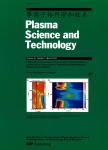Analysis of Plasma-Driven Tritium Permeation Through the First Wall of DFLL-TBM in ITER
Analysis of Plasma-Driven Tritium Permeation Through the First Wall of DFLL-TBM in ITER作者机构:Institute of Plasma PhysicsChinese Academy of Sciences School of Nuclear Science and TechnologyUniversity of Science and Technology of China
出 版 物:《Plasma Science and Technology》 (等离子体科学和技术(英文版))
年 卷 期:2009年第11卷第6期
页 面:730-733页
核心收录:
学科分类:08[工学] 082701[工学-核能科学与工程] 0827[工学-核科学与技术]
基 金:supported by National Natural Science Foundation of China(Nos.10675123,10775135 and 50871108) the Knowledge Innovation Program of Chinese Academy of Sciences
主 题:plasma tritium permeation first wall TBM
摘 要:Tritium permeation through the first wall (FW) from the plasma into helium coolant is evaluated for a dual-functional lithium-lead test blanket module (DFLL-TBM). The effect of the surface conditions on the plasma facing and coolant sides, both temperature gradient and beryllium layer clad on the plasma facing side, as well as trapping in defects on the tritium permeation is considered. The results show that most of the tritium implanted in FW re-entered the plasma. The plasma-driven tritium permeation is very sensitive to the surface conditions on the plasma facing side. With a higher sticking coefficient on the plasma-facing side, the tritium permeation into helium coolant is significantly reduced. The tritium permeation is strongly reduced with a beryllium layer clad on the front side of FW. The plasma driven tritium permeation will not seriously impact the tritium safety of DFLL-TBM. Based on tritium safety, it is reasonable to clothe the beryllium layer on FW and keep the surface clean to reduce the plasma driven tritium permeation.



